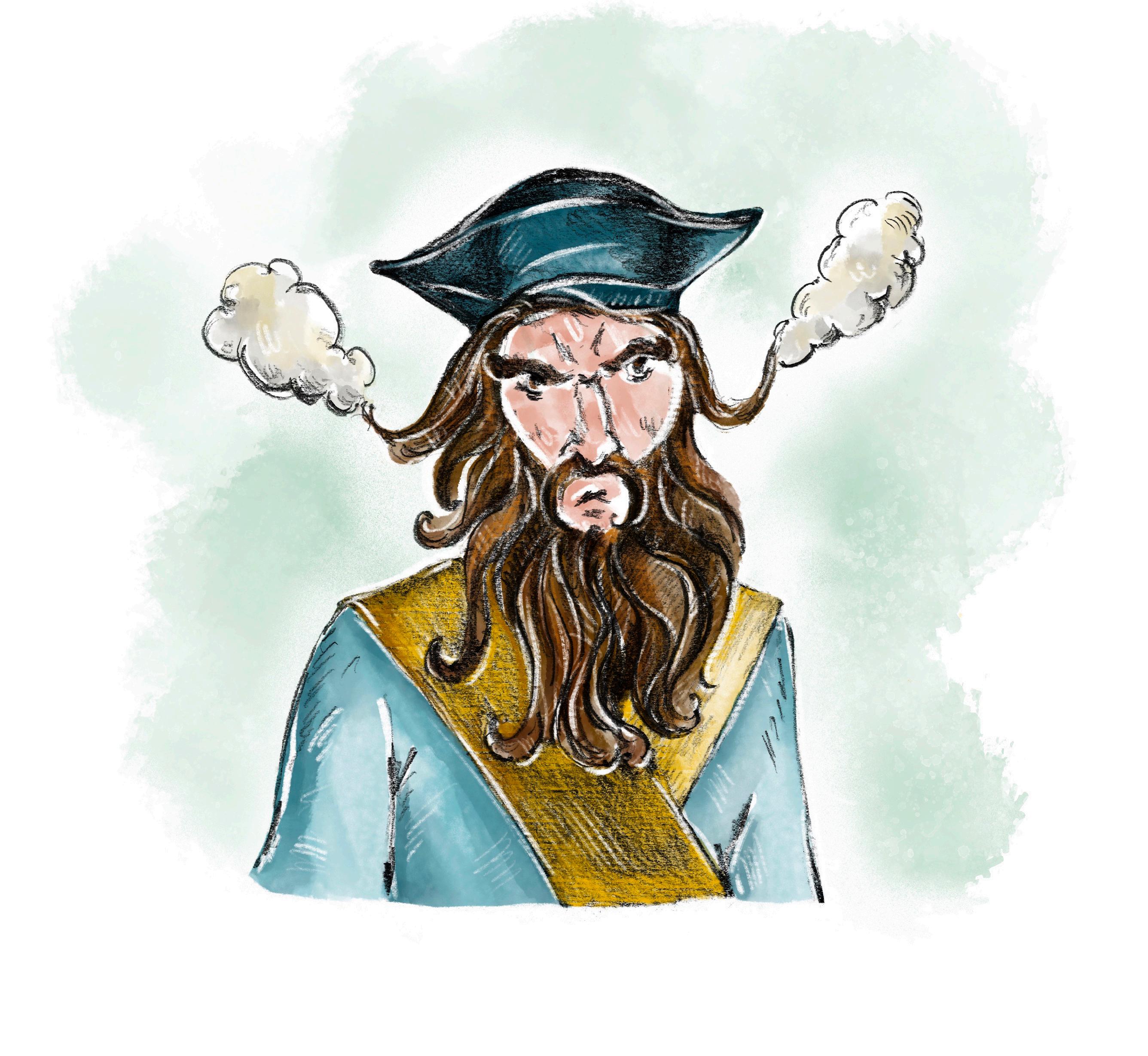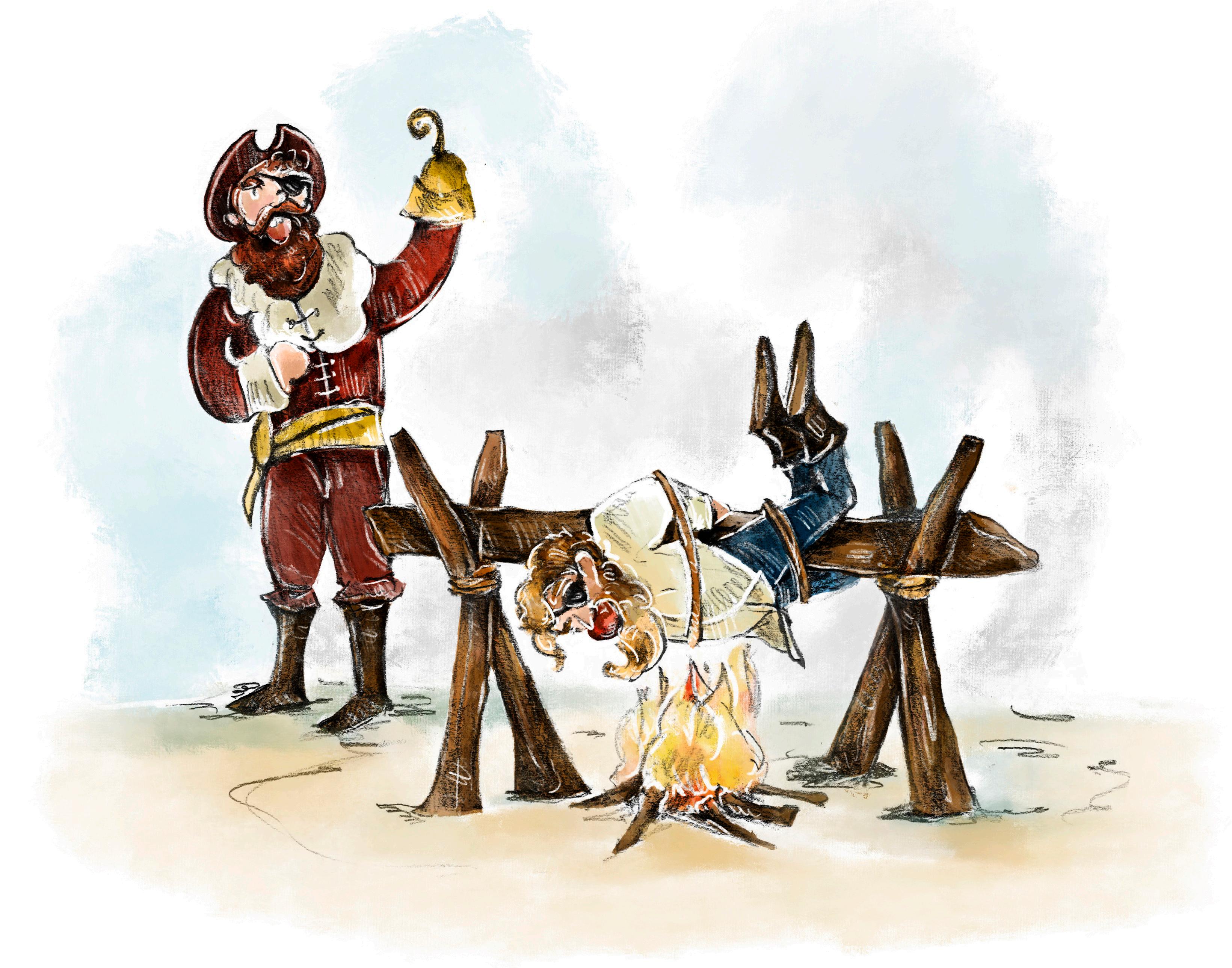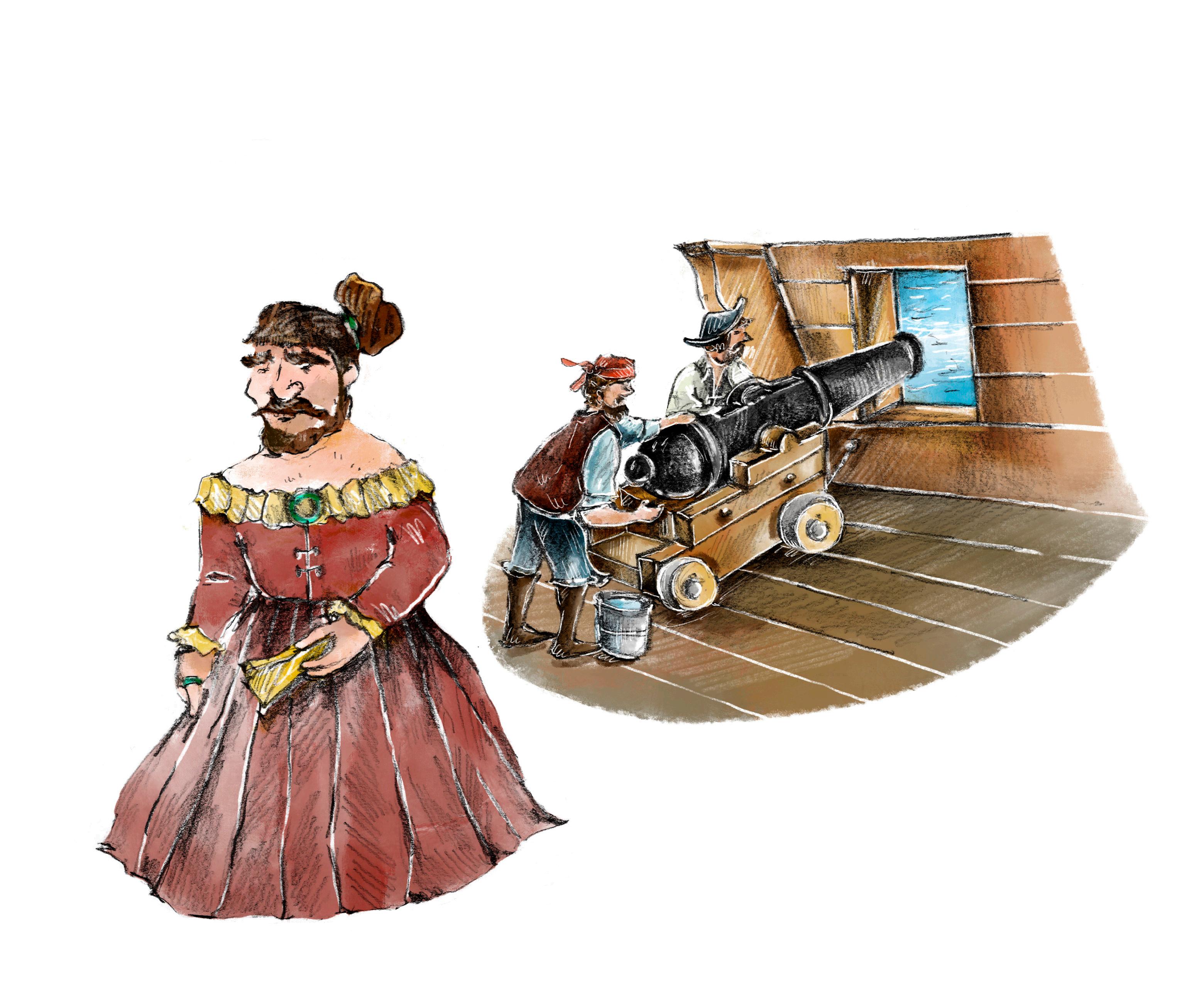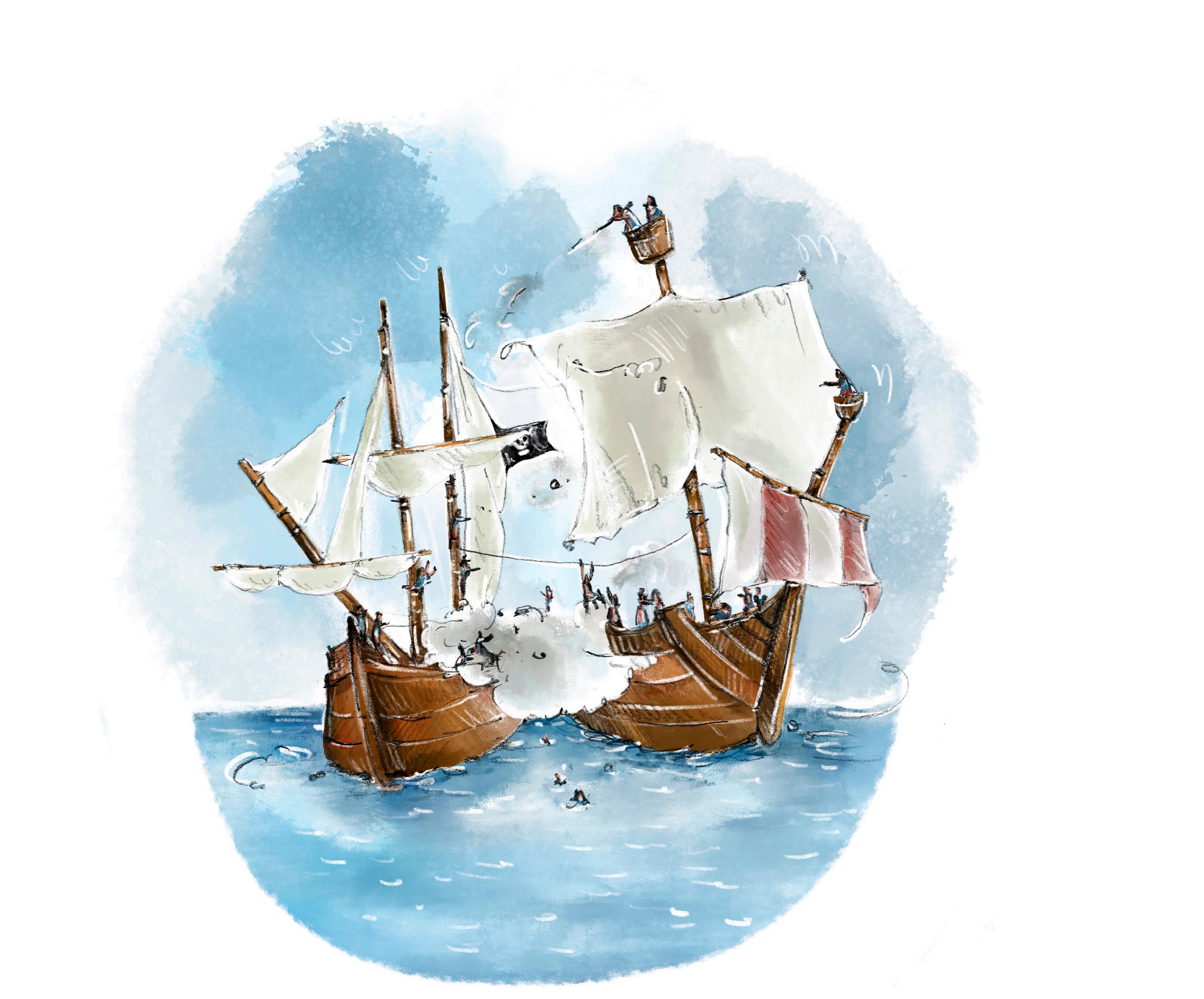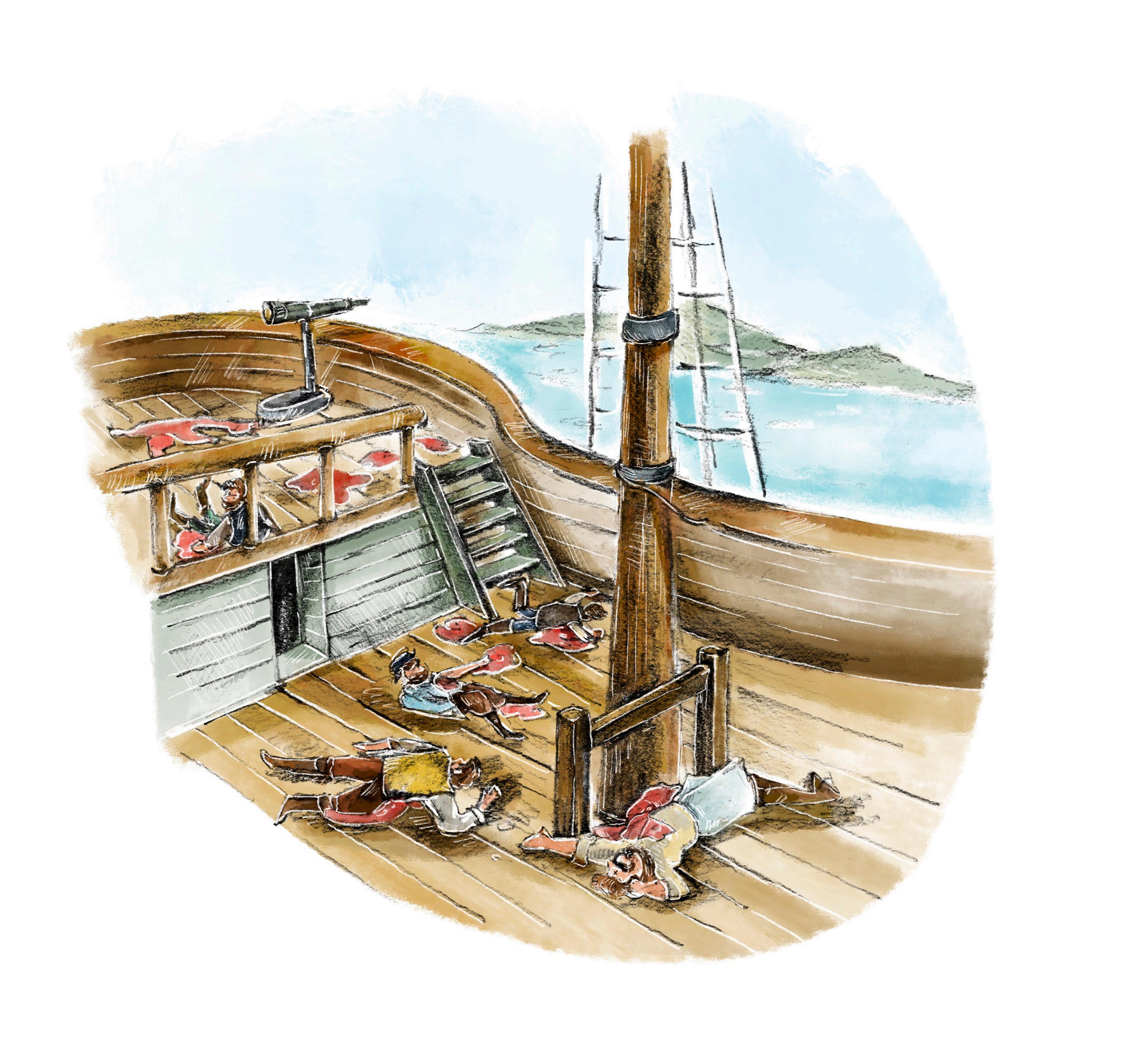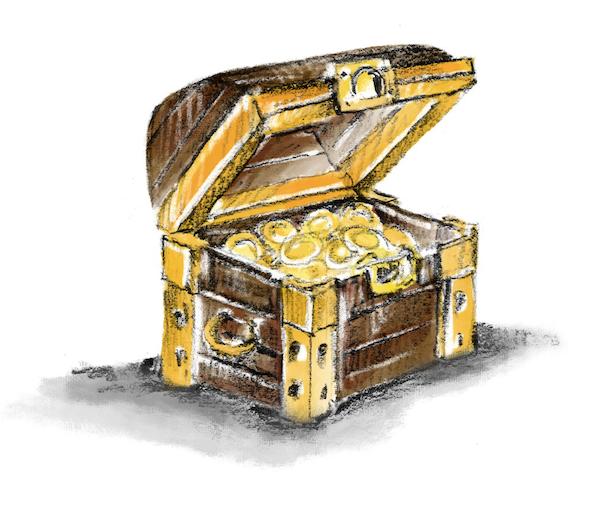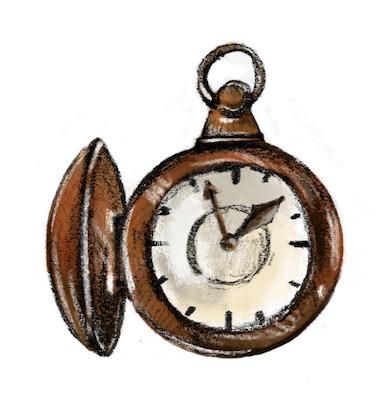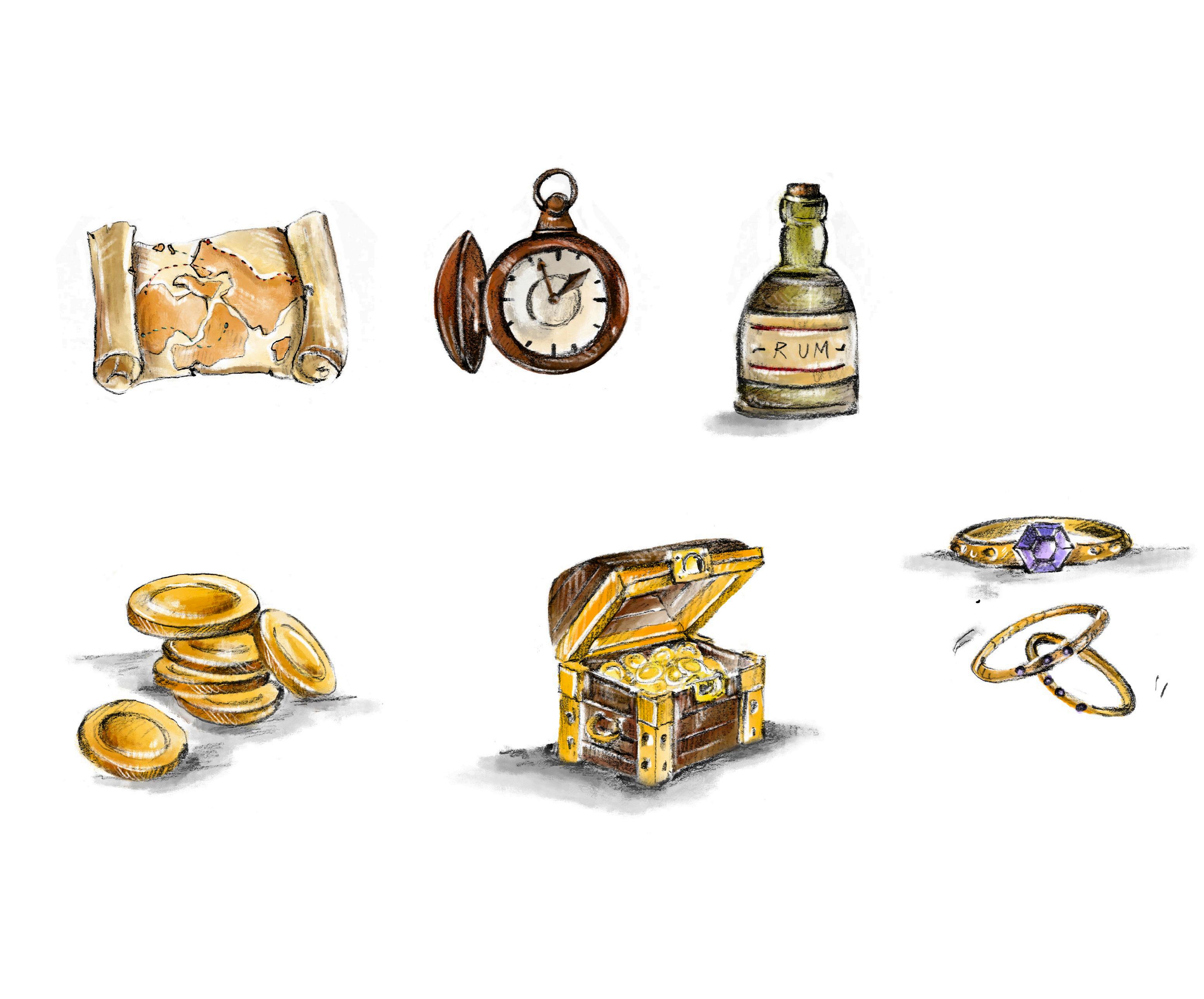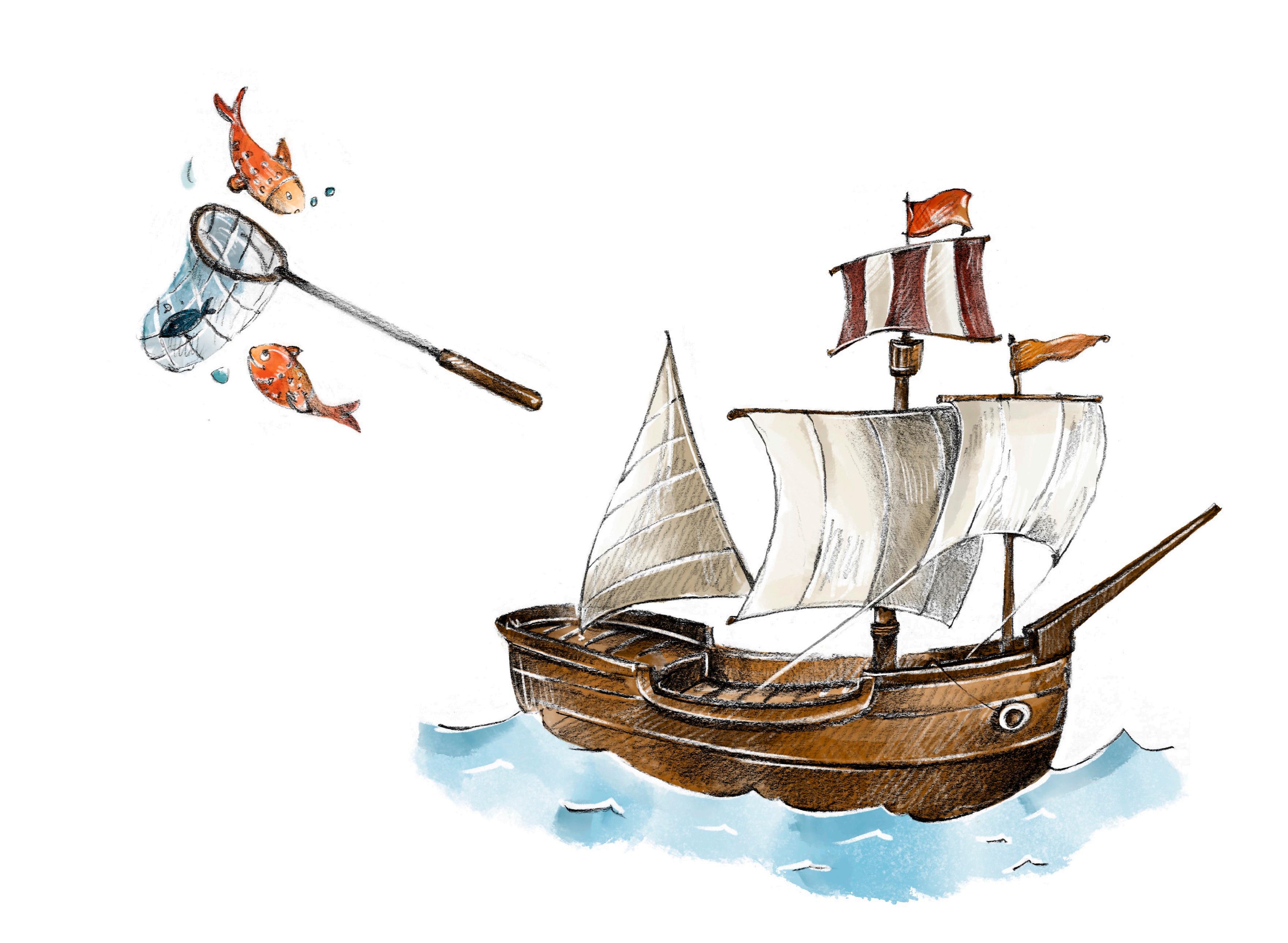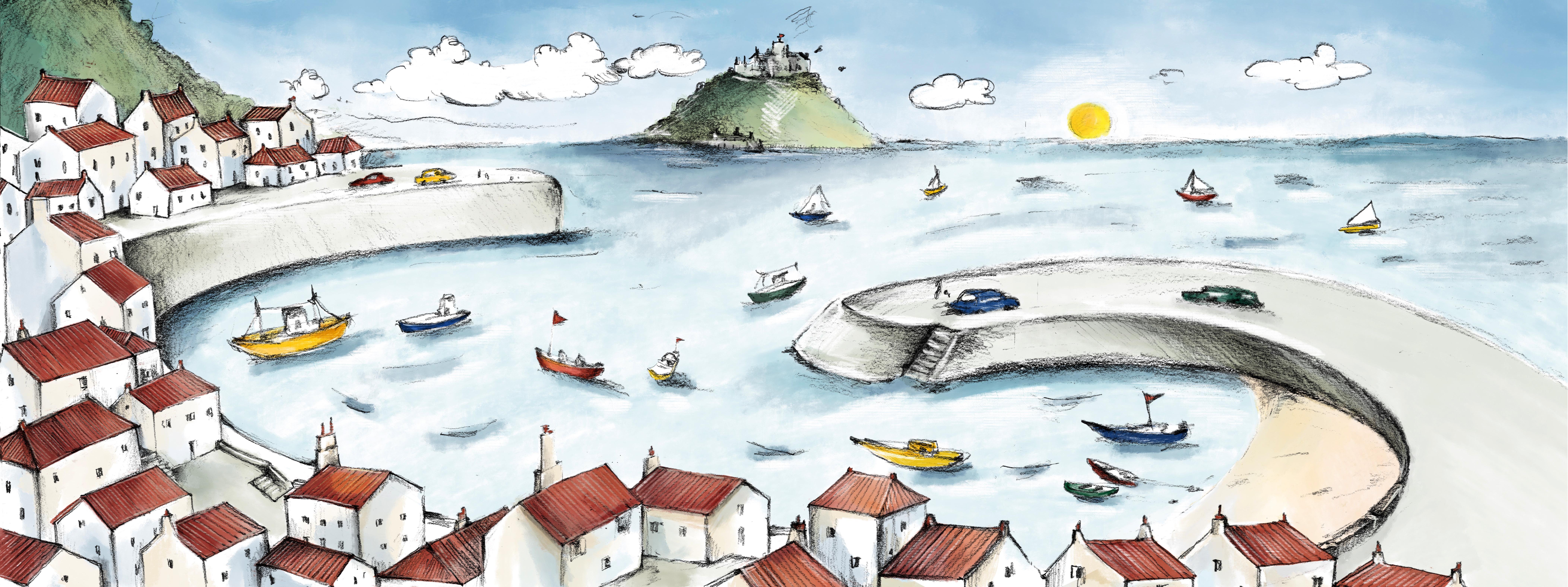


My name is Henry and I'm a ten year old English cocker spaniel.
I have a lovely new book for you and this time it's all about the world of pirates
Come with me on a journey into who they were, how they lived even down to what they wear and eat!

So what exactly is a pirate ?
A pirate is basically a thief who travels by water. Most pirates would attack ships but sometimes they actually launched attacks on coastal towns.

Turn the pages and find out all about the history of pirates, why they existed, where they would attack and some of their stories.
Pirates originally came from various parts of the world.
When we study the history of pirates, we learn that the pirates actually go back thousands and thousands of years!
The word pirate (peirato) was first used 2160 years ago by a Roman historian called Polybius.
He described pirates as people who 'attack without legal authority not only ships, but also maritime cities'.
A maritime city is one that's at the sea and has a port. It was such a big problem some of the earliest cities in Ancient Greece moved inland to stop being raided.



The first known pirates can be traced back to the Mediterranean Sea :the ancient Phoenicians, who lived in what is now called Lebanon are seen as the very first pirates in history. According to ancient Greek history they traveled as far as South Africa and were masters of the sea.
Their success was due to their ships. They were known for their speed and their ability to sail harsh seas. Their boats had room for many rowers and were built to sail long distances.
Phoenician sailors themselves were super skilled.

They were some of the first people to use stars to navigate.
The Greeks called Phoenicians the 'purple people' because the rare purple dye they made from snail shells was used in their clothes. Purple was a color never seen before.
Along with their famous purple dyes, Phoenician sailors traded wine, spices, textiles, wood, glass, metals, incense, papyrus (paper) , and carved ivory.
Ancient writers would call Phoenicians 'expert sailors' but some groups turned into pirates to earn more money. These early pirates targeted merchant ships and coastal towns, seeking valuable goods and loot.
Sailors tricked people onto ships, pretending to show them goods to buy and then captured them as slaves.
Kidnapping citizens from coastal towns and ports to be sold as slaves would make them a lot of money. A healthy slave would fetch up to $3000!



Of course with all those boats filled with amazing things it meant that the Phoenician's boats were also attacked and goods were stolen.
.The rugged coastlines of the Mediterranean were another advantage to pirates.
Numerous hidden coves allowed their ships to stay hidden from view until it was too late to escape.
Merchant ships were really slow and had no speed and they were difficult to control whereas pirate's ships were quicker and really good at getting about.

Vikings were also fierce pirates and warriors who terrorized Europe from the late 700s to about 1100. During this period Viking sailors also explored the North Atlantic Ocean and even reached America.
This period of European history is called the Viking Age.
The Vikings lived in Scandinavia, a region of Europe that is now Denmark, Norway and Sweden.

The Vikings were very early pirates - they conquered and looted parts of England, France, Germany, Ireland, Italy, Russia, Scotland, and Spain.
At first, they raided these areas just to steal things.
Later, they set up trading centers and trade routes.
Viking ships carried settlers to Iceland and to Greenland, which had been unknown to Europeans until then.
Leif Ericson, a Viking explorer, landed in North America around 1000, about 500 years before Christopher Columbus arrived there in 1492. The Vikings established a settlement in North America, but it lasted only a few years.


The name Viking wasn't used until AFTER the Viking Age!
It came from Vik - the name of a busy pirate center in Norway.
In Scandinavia the saying 'to go a-Viking' meant to fight as a pirate or warrior.
During the Roman Empire, pirates from Cicilia (an old part of Turkey) controlled most of the Mediterranean. They even managed to capture a young Julius Caesar on one of his sea journeys.
When he was 25 pirates captured him on his way to study in Rhodes. They asked for a ransom to be paid of 20 pieces of silver and he was so appalled because he felt he should be worth more and so he increased the ransom to 50.
While he was kidnapped he made friends with them, laughed with them and even joined in with their games. He would joke with them that if he was released he would come back and kill them all. He promised to cut their throats and crucify them (hang them on a cross shaped post)
He was eventually released and kept to his word.
He came back and killed every single one of them!



By the year 1241 pirates were everywhere...
It was so bad on the coastline of Germany and other countries near the Baltic Sea that all the countries came together to protect themselves and created the Hanseatic League.


The League hired a massive army of men and even a small fleet of ships to protect itself from the pirates. More than 200 towns came together and as they started to feel more safe at sea they developed a bigger cargo ship called 'the cog ' . It was a bulbous, single-masted cargo ship with a square sail, stern rudder and a flat bottom.
. A cog could carry a large amount of cargo with just a few men in the crew.
. The cog was not only used as a cargo ship, but could also be converted into a warship.
The problem was these large ships also became huge targets for pirates because they had more goodies on board to steal..

By the year 1300 it was the English coast that needed protection.

A group of towns got together and called themselves Cinque Ports (cinque is old French for 'five')
The five ports of Dover, Sandwich, Hastings, Romney, and Hythe and later Winchelsea and Rye and other neighboring towns joined the confederation.
These towns were small, sleepy fishing villages, completely unaware of the outside world. Once a year a sort of fair was held called the Yarmouth Fair at which the fishermen from the various villages met and exhibited their catches.
The villages began to be raided by Danish, French and Norwegian ships - these were basically pirates. So they set up their own fleet to protect all ports.

This worked well but as they grew their fleet of ships they retaliated by raiding the French coastal towns. In fact, they sometimes even attacked English ships so THEY became pirates!
Everyone thinks pirates are English with a Cornish accent or are in the Caribbean - but they were actually everywhere.
In the 13th century a group of farmers and fisherman called Wokou came together.
They were basically Japanese pirates who sailed around the coastlines of Japan, Korea, and China for 40 years with up to 400 ships!
Originally, the Wokou were mainly soldiers, merchants and smugglers from Japan but in later centuries most of the pirates actually originated in China.

In the 1400' s the world started to open up

Remember back then there was no radio or TV. No phones or computers. No planes or cars.
Many people believed the earth was flat and didn't know that if you got into a ship and sailed for days and days that you would get to another country!

At the same time another explorer called Christopher Columbusin 1492 he landed in the New World which we now call America!
Although he was Italian he was paid for by the Spanish to do the journey and it opened up a sea route that led to many European countries. FUN FACT : He never actually set foot in America as he landed in the Bahamas !


In 1498 another explorer from Portugal called Vasco de Gama discovered a way to sail to India. He was asked by Portugal's King to take over this part of India and control its people and spread religion.
This was an amazing country with spice and tea and fabrics and food that had never been seen before.
This did however create a problem: once the route was established it not only opened up trade and sea routes between Europe and India but it meant more ships for pirates to target and more booty to steal!


So all of these amazing explorers opened up the world and a new map was drawn up with lots of new routes and countries and chances to trade beautiful exciting amazing things.
The problem is ever since Christopher Columbus, the Spanish had control on the money and treasures of the Caribbean, Mexico, and Central America.
England, Holland and France all wanted what Spain had, and so they employed pirates and privateers to set up colonies in the Caribbean and attack Spanish ships to steal their cargo.
By 1550 Spanish ships were constantly being attacked and someone very surprising was helping the pirates...
In 1557 Queen Elizabeth and her government were very annoyed that they couldn't do any trade with the colonies of the New World, This is because King Philip II of Spain wouldnt let her...Spain did not like England at all...
So guess what she did instead? She turned to robbery.
Queen Elizabeth and England did NOT want a war with Spain because England did not have a very good army at the time.
So she instead realised that there were dozens of very experienced sailors with their own ships who could attack the Spanish ships at sea
She actually encouraged them - so in a way she allowed pirates to do their job but they were instead called privateers.(see the next page to understand more about what a privateer is)
As the relationship between the two countries got worse, the privateers became very good at taking wealth away from Spain.
They also managed to stop King Philip's plans he secretly had to build his Armada fleet which he hoped to invade England with.


So let's understand what the difference is between a privateer and a pirate.
A privateer is a person who was given an official license by their Government to attack ships belonging to an enemy country - usually during a war. They would receive something called ' a 'Letter of Marque' from their country's Government.
This gave them permission to raid enemy ships and keep some of the money for themselves so long as they paid a cut back to the Government.
So basically it's like a pirate with a special piece of paper !
But why did privateering start? Well it can take years to build a warship so if there was a sudden outbreak of war this was a quick and easy way to get privately owned ships to be part of the Navy.
But also if a country was running short on money then it was much cheaper to allow privateers than to pay for navy ships.
One of the most famous privateers that worked for Queen Elizabeth was Sir Francis Drake.

Seen as a hero by the English and a pirate by the Spanish
In Panama in 1573 he stole 20 tonnes of silver and gold from a train making its way to the King of Spain
In 1577 he was secretly asked by the Queen to terrorize Spanish settlements on the American Pacific Coast but pretended it was a ' voyage of discovery' to find the lost Kingdom of El Dorado.
The Queen even paid for five ships to be used.
He brought a huge amount of treasure and spices back to England and as a thank you she knighted him and made him a 'Sir'.
A full size reconstruction of his pirate boat the "Golden Hind" can be visited in London


Another famous privateer paid for by the Queen was Sir Walter Raleigh.
He was an explorer, soldier, seaman, writer, and favorite of the Queen.
His trips to America helped future colonies to be founded but he is also famous for bringing tobacco to England and constantly searching for the legendary lost city of gold : El Dorado.
He organised three expeditions to form a colony on the coast of North America in the 1580s.
It was hoped this could serve as a useful base to attack Spanish ships in the Caribbean
His fleet's capture of the Portuguese treasure ship in the Azores in 1592 made the Queen very very happy.
The ship was full of gold, silver, pearls, jewels, bales of fine cloth and rolls of silk, exotic animal hides, crystalware, Chinese porcelain, spices, unworked ivory and ebony, and perfumes.
The Queen alone received some £80,000 worth of goods.
Despite being one of her favorite pirates and making her and England very rich she was hot happy with him.
She became jealous of his relationship with one of her ladies in waiting and imprisoned them both in the Tower of London!




This is the bit you might know about and have watched lots of movies about.
Pirates of the Caribbean!!
The Spanish were taking everything they could from central and south America and the islands back to their king. Their galleons, were full of gold and silver looted from Aztec, Incan, and Mayan civilisations
It didn't take long for these treasure ships to be targeted.
The Caribbean is full of tiny islands which acted as perfect bases for pirates to strike from and base themselves before disappearing to their hideouts in the coves especially in Bahamas and Jamaica.
Pirating in the Caribbean started around the 1500s and lasted some 300 years with a total of more than 5,000 pirates prowling the waters!!
Before we look at all the iindividual pirates and their stories let's think about what it was like to actually BE a pirate
Perhaps you get carried away with the tales of Blackbeard and Captain Hook. Maybe the idea of being on the sea, fighting battles, and stealing treasure excites your imagination.
Maybe you could see yourself with a sword and a pair of boots, with the shoulder-perched parrot and eye patch.
But did you ever stop to think about what it really might have been like to live as a pirate?
How did you even become a pirate ?
Often, pirates started out as young sailors who quickly learned that stealing was the easiest and quickest way to make a living.


Other ways to become a pirate were to join a friend's ship (who was already into piracy).
Or if you were a woman tough enough to handle it...marry a pirate (as in the case of Anne Bonneyshe married pirate Jack Rackham and so also became a pirate !)


So what exactly did pirates do?
A pirates' main way of living and to get money was to steal from others. They'd steal treasures like gold and jewels but also most of the time, pirates would actually steal things to help them stay alive.
So things like food, drink, and supplies for sailing would make their way off one ship and onto a pirate's ship in no time!
The treasure stolen would be looked after by the Quartermaster but actually a lot of the time it was food and clothes and small jewellery - not always the biggest gold treasure and thousands of coins we imagine!
And if they sold any treasure they would often quickly spend the money on more food and drink!
What did pirates do in their spare time?
Pirates loved to eat, drink, and be merry.
They were known to be revelers for a reason...they liked to feast and party!
They would live life to the full. Soaking in all of the luxuries of life in one night was important to a pirate because who knows when they would have the opportunity again? Tomorrow could be their last day!
Pirates also had to maintain their ships. This meant cleaning and repairing their ships so that these vessels would live to sail another sea. Stolen goods could be used to keep their ships in worthy condition so a lot of their time was spent fixing things!
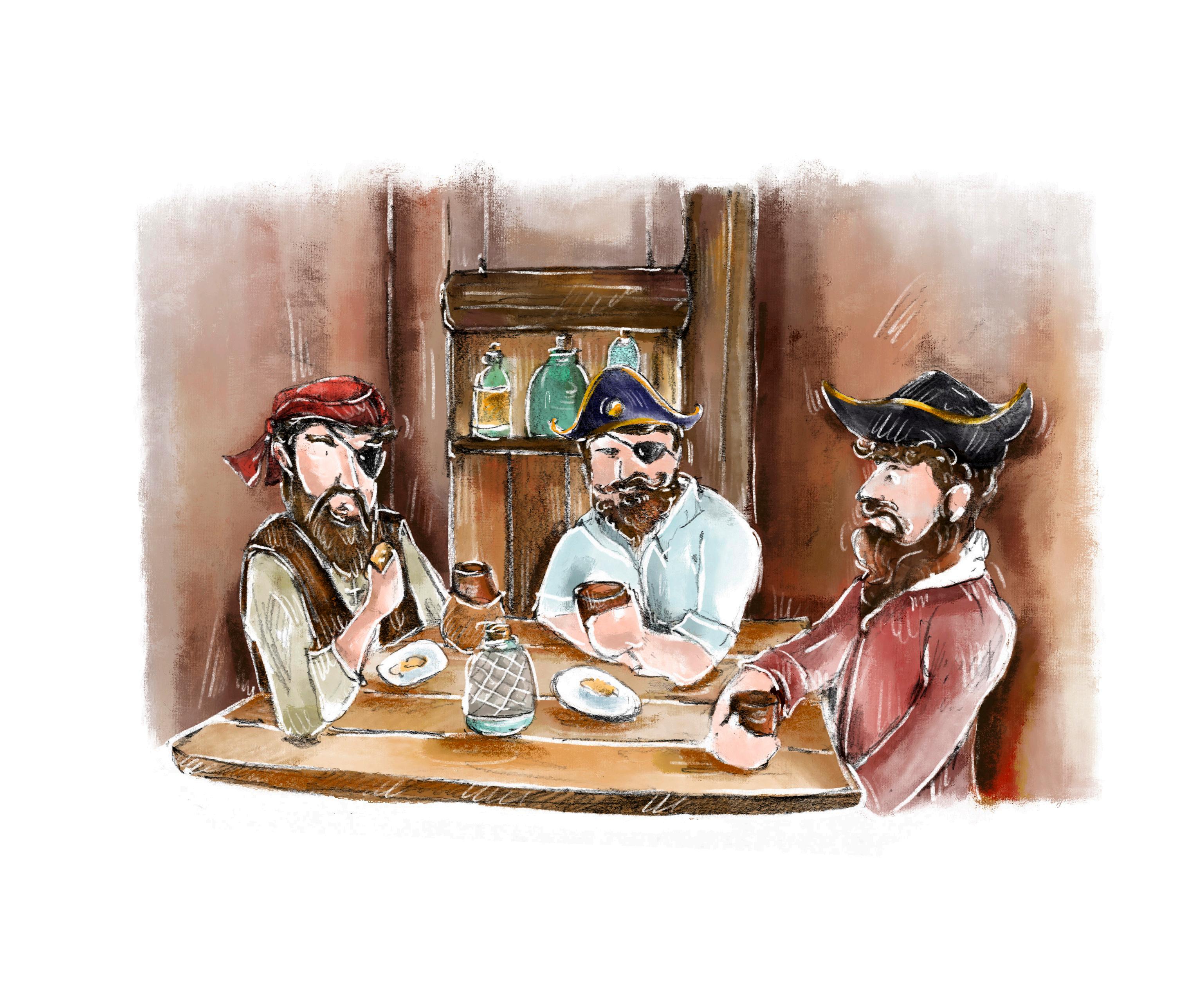

And what about their food? What did they eat ?

If they were away at sea for a month,they might be eating rotten bread and drinking spoiled water.

They had no way to keep their food cold or frozen, which meant that much of their food supply, their bread and dairy products, would rot or grow mold.
Because of this, pirates would eat a lot of cured (salted) meats and fermented vegetables.
They would also have sea biscuits (a hard bread meant to last long periods of time), sauerkraut (a fermented white cabbage), and a broth made from boiled fish and meat bones.
You would think they would eat fish right?
It was actually unusual for pirates to have the time to sit around and fish all day for a bite to eat. It would have taken too long and not produced enough food - they had ships to raid and treasure to find.
So what did pirates drink ? Well in truth, most pirates were alcoholics and they would drink all day every day.
The pirates in the Caribbean drank a LOT of rum (alcohol made of sugar cane).
Beer was also a favorite and was something they would often steal from other ships as well as mead, brandy and wine.
Fresh water was stored in barrels and quickly became stagnant and unsafe to drink. So they had a little trick- they would add rum to the water to make it safe to drink - this was called ' a tot'.
Long journeys at sea were tough and life aboard a ship was full of hazards, such as nasty diseases, the possibility of starvation, dehydration, and dangerous weather. It could also get boring after months on the same boat.
Sailors received a daily ration of these rum tots which would help keep them upbeat and merry.
Many sailors and pirates faced the threat of scurvy: a painful disease if you don't get enough Vitamin C. It was tough to get enough vitamins in the diet so far from land and it was impossible to store vegetables for long lengths of time.
Ships carried limes on board, which went remarkably well with rum - this bit of lime juice helped prevent scurvy.
We picture pirates stealing chests of gold and jewelswhen, in reality, they were most likely stealingchests of rum.
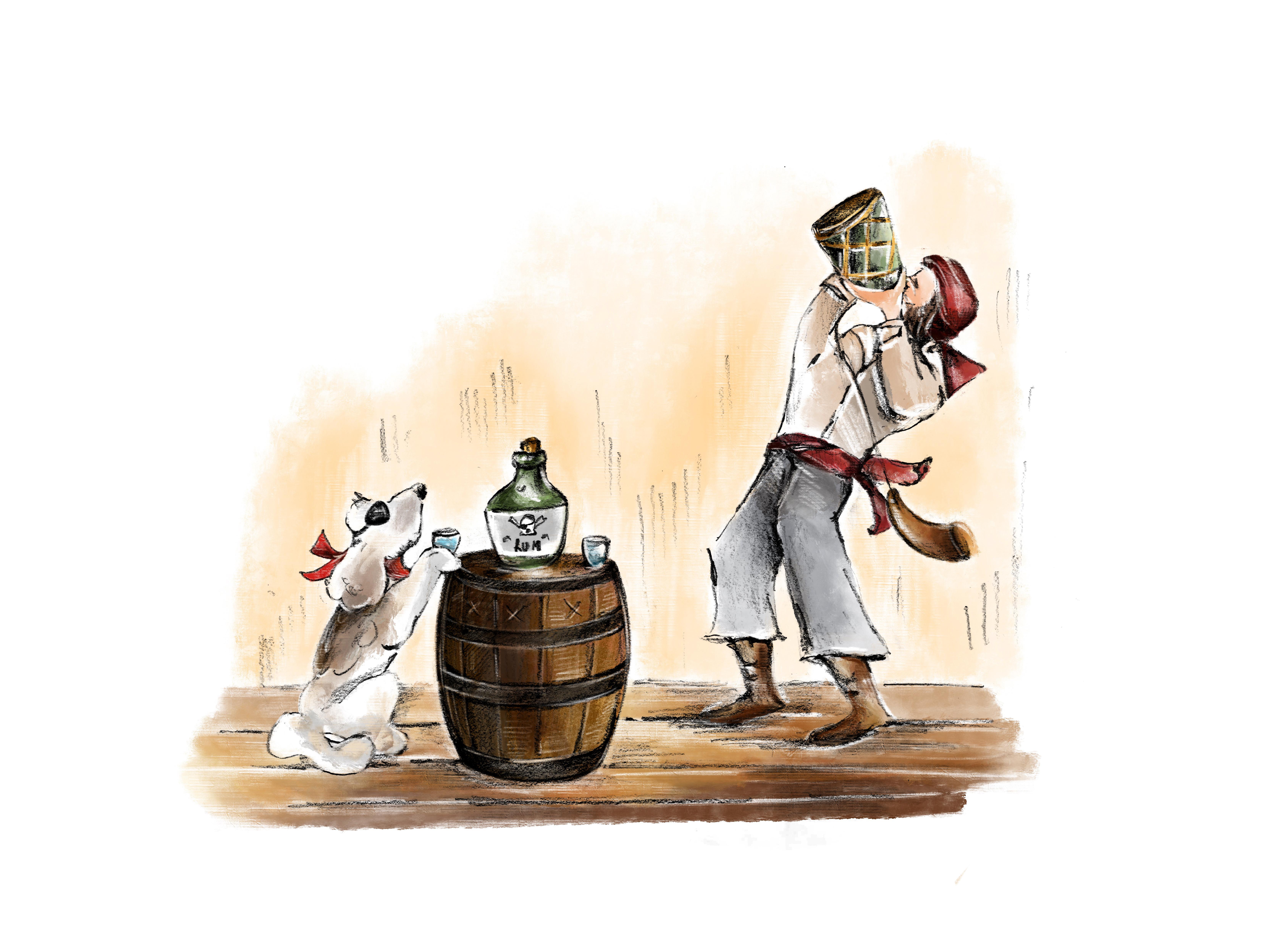
Where did pirates sleep and bathe?
If you were the Captain or ranked higher amongst the crew, you might be spoiled with a private sleeping quarter but these rooms were pretty rare and only the lucky few got a real bed.
If you were just a regular crew member then you would be sleeping in a small space with lots and lots of others crammed in - so you had no privacy.
Sometimes, they had hammocks; other times, they were on the floor. The hard, wooden, dirty floor.
Most pirates loved to sleep on a hammock and would fight over it. A hammock would rock and sway with the ship's motions so they would actually get a pretty good night's sleep.




Imagine sleeping in a crowded room with a bunch of men who haven't washed for a while....yuck!
You can bet that a pirate's hygiene was pretty bad.
Not only did they have a lack of water but most of them were drunk men and most likely didn't care if they were smelly.
Fresh water on board a ship was reserved for drinking purposes, not bathing purposes.
Strangely despite having sea all around them they wouldnt bathe in the sea - although there are many stories of men being lowered into the ocean water in order to cool off from the hot weather.
There was no such thing as deodorant and what teeth they still had were never brushed.
Pirates did not usually live a long life. You would think this was because of the battles and fights they would have - but it was usually because of just life as a pirate.
Being exposed to the harsh hot and cold weather would take its toll, poor hygiene, exposure to other pirates who are ill, being involved in dangerous conditions, starvation, dehydration...the list goes on...
Sometimes, pirates were wounded or even killed while trying to steal from another ship. A pirate might have a gunshot or knife sword wound in a battle.
If the pirate didn't bleed to death, the infection might set in and kill them instead.
If a ship was to be hit by a cannon or if it was flipped over in a storm or on rocks, pirates could drown to death.


Barbers and surgeons would be taken on trips - they were great for cutting pirates hair and cutting off legs and arms if the pirate got injured or had disease.
If a pirate did something bad on the ship and actually stole or upset his fellow shipmates he would be punished.
Sometimes he would be deserted on an island and left to die.
Other times he would be dunked (dropped into the water) to scare him into never doing bad things again.
He could be flogged which means hitting him with branches and sticks - not very nice at all!
And if he was really really bad he would be made to walk the plank. Blindfolded and pushed off the boat to drown.
If a pirate was captured for his criminal activities he would be hung and literally fed to the birds! Hideous!


So what did pirates wear? Did they really have an eye patch?
Well yes they did! But not because of a missing or wounded eye. The popular theory amongst historians is that pirates would wear eye patches to help their eyes adapt to the dark.
When attacking a ship, the pirate crew would often need to move quickly between the bright sunlight on deck to the darkness of the lower decks during battle. This caused a major problem - the human eye can quickly adapt when moving from darkness into light but it doesn't work so well the other way round.
The pirates could hardly pause the battle and kindly ask their opponent to wait a few minutes until they could see again. The eye patch apparently really helps! They also really did grow long beards but just to make them look scarier!


Pirates wore a lot of silk, stolen from ships near India. Silk was super expensive and an average sailor could never afford to wear it so pirates would wear it to show off who they were.
A fancy jacket to a pirate was everything. And yet, even the most beautiful jackets would often be rubbed with tar. Why? To make them waterproof.
They would have a sash which would not only act as a support for their lower back but also because back home the only people who wore sashes were wealthy people so this was their way of again showing off.
Pirates would have a headscarf to keep the sweat off the face and a baldric (a type of belt) to hold his cutlass and his pistols.
They also loved jewelry. And because of the pirate code, all booty was shared equally so this meant that even a lowly shipman could show off his bling.
It's also possible pirates would wear makeup - like war paint and to finish the look - the fanciest hat a pirate could steal.

Did pirates really have parrots? They did!
Macaw parrots were seen as a status symbol and the pirates made a hefty profit selling them to the wealthy upper class of Europe.
Apparently because these parrots are highly intelligent and social, the pirates would entertain themselves and let them sit on their shoulders during the long voyages.
They were colorful, they could be taught to talk and were so entertaining they could fetch a good price in the bird markets of London.
Pirates would also REALLY really use wood to replace a leg if it was damaged by a cannon. They would saw it off and replace it - yuck!
They do NOT make maps of buried treasure. They spent the money as soon as they could. Think for a minute...why bury it and draw a map for others to find it one day?
They would send notes with a black spot in the middle to warn people they were coming to kill them!

They really DID fly black flags with skull and cross bones on.


So let's look at some of the most famous pirates.
The more skulls you see - the more awful the pirate was.
Sir Henry Morgan was Welsh and did such a good job as a pirate working for King Charles that he was made the Governor of Jamaica!
He was absolutely hopeless at sea though - he wrecked a ship by sailing it into rocks.
Another ship blew up when some drunken sailors knocked a candle over in the gunpowder store. Nearly everyone on the ship died except for him!
Lady Mary Killigrew
Fancy name but nasty nasty woman. She lived in Cornwall in England and she once killed everyone on a German ship.
She jumped on board and sailed away with all the jewels and silver.
She did the same to another German ship, which beacuse of bad storms, was forced to moor in a Cornish village called Falmouthshe killed the entire crew and stole all the treasure.
Queen Elizabeth I liked Lady Killigrew and instead of allowing her to be hanged decided to save her and send her to jail instead
- Queen ELizabeth did not like Germany and was secretly happy about what happened!

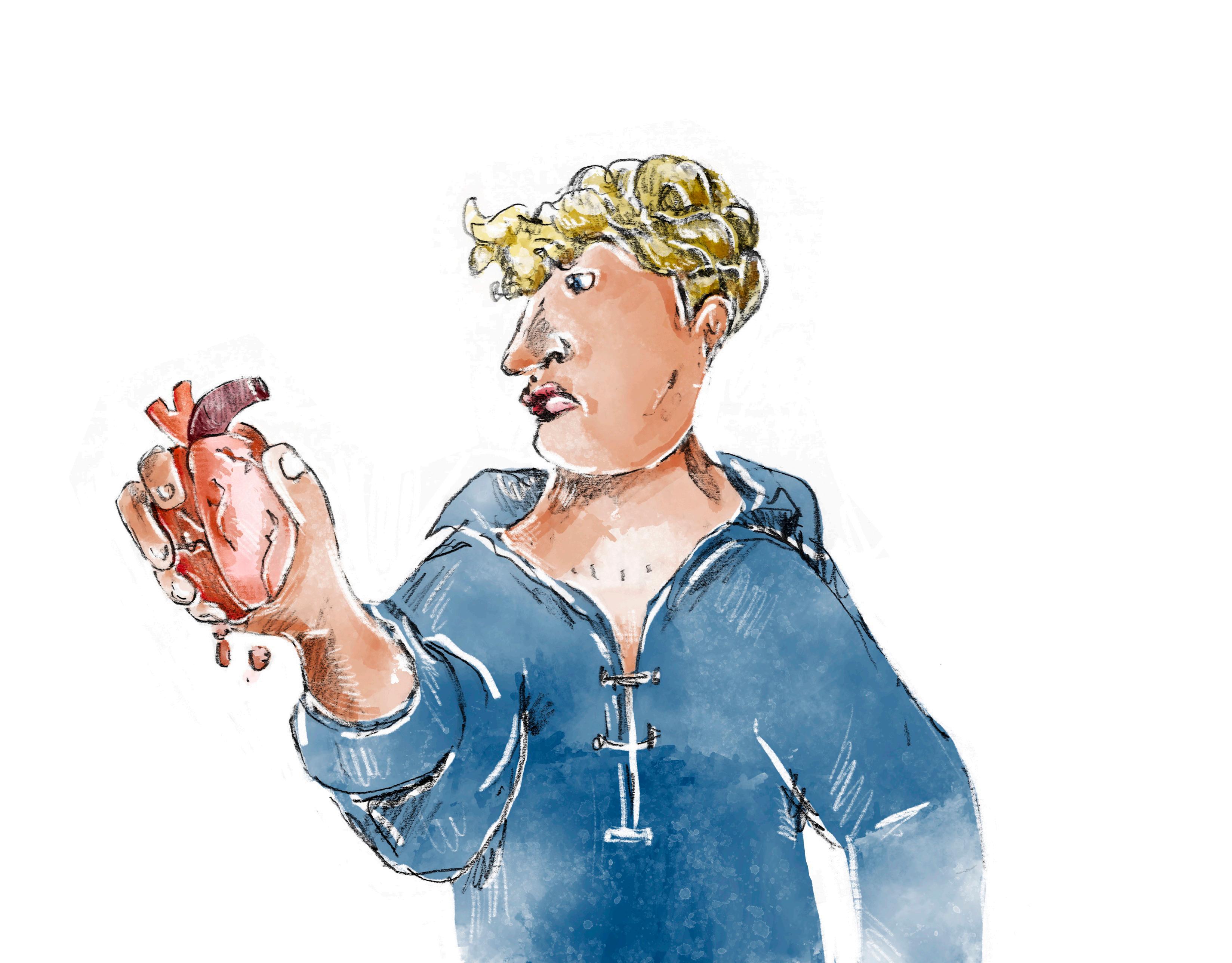
Ned Low
Ned was not a nice man. He was born in America and he used to be a pickpocket - someone who sneaks up on people and takes things from their pockets without them realising.
If he found out someone on his crew was married he would shoot them in the head because he didn't want his men to run home to their wives.
One time he killed 53 people with his sword on a Spanish galleon. He even made one Spanish sailor eat the heart of his friend - and then he killed him. He also burnt the French cook alive on the boat!
He once chopped off the ears of the Captain of a seized ship and forced him to eat them, after he'd seasoned them with salt.
Nasty Ned
